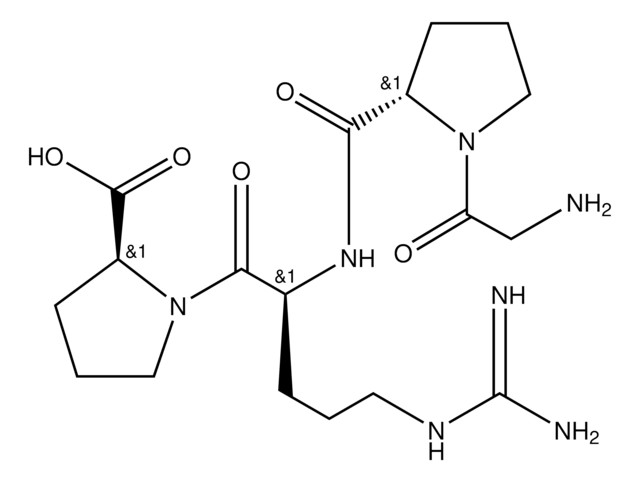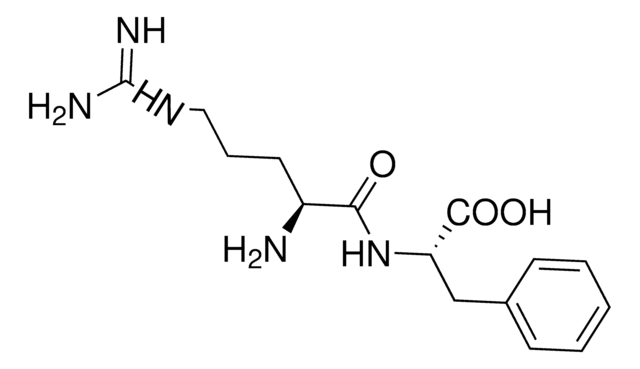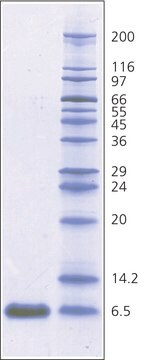G5386
Gly-Gly-Tyr-Arg
powder, ≥97% (HPLC)
Synonyme(s) :
GGYR, Glycyl-glycyl-tyrosyl-arginine
About This Item
Produits recommandés
product name
Gly-Gly-Tyr-Arg, ≥97% (HPLC)
Source biologique
synthetic (organic)
Pureté
≥97% (HPLC)
Forme
powder
Solubilité
water: 2 mg/mL, clear, colorless
Température de stockage
−20°C
Chaîne SMILES
NCC(=O)NCC(=O)NC(Cc1ccc(O)cc1)C(=O)NC(CCCNC(N)=N)C(O)=O
InChI
1S/C19H29N7O6/c20-9-15(28)24-10-16(29)25-14(8-11-3-5-12(27)6-4-11)17(30)26-13(18(31)32)2-1-7-23-19(21)22/h3-6,13-14,27H,1-2,7-10,20H2,(H,24,28)(H,25,29)(H,26,30)(H,31,32)(H4,21,22,23)
Clé InChI
FJPHHBGPPJXISY-UHFFFAOYSA-N
Application
- in the synthesis of the dimethoxyphosphotyrosine adduct to determine if diethoxyphosphate tyrosine (depY), a monoclonal antibody could distinguish between dimethoxyphosphotyrosine and diethoxyphosphotyrosine
- to graft on to a soft polyacrylamide for sodium dodecyl sulfate–polyacrylamide gel electrophoresis (SDS-PAGE) to perform high-resolution separation of peptides
- as a model peptide to react with 3,3-dithiobis(sulfosuccinimidyl propionate) (DTSSP) to understand the chemistry of DTSSP and similar cross-linking reagents
Code de la classe de stockage
11 - Combustible Solids
Classe de danger pour l'eau (WGK)
WGK 3
Point d'éclair (°F)
Not applicable
Point d'éclair (°C)
Not applicable
Équipement de protection individuelle
Eyeshields, Gloves, type N95 (US)
Certificats d'analyse (COA)
Recherchez un Certificats d'analyse (COA) en saisissant le numéro de lot du produit. Les numéros de lot figurent sur l'étiquette du produit après les mots "Lot" ou "Batch".
Déjà en possession de ce produit ?
Retrouvez la documentation relative aux produits que vous avez récemment achetés dans la Bibliothèque de documents.
Les clients ont également consulté
Articles
Uncover properties and applications of the cysteine protease papain and find inhibitors, substrates, and other papain products.
Notre équipe de scientifiques dispose d'une expérience dans tous les secteurs de la recherche, notamment en sciences de la vie, science des matériaux, synthèse chimique, chromatographie, analyse et dans de nombreux autres domaines..
Contacter notre Service technique














